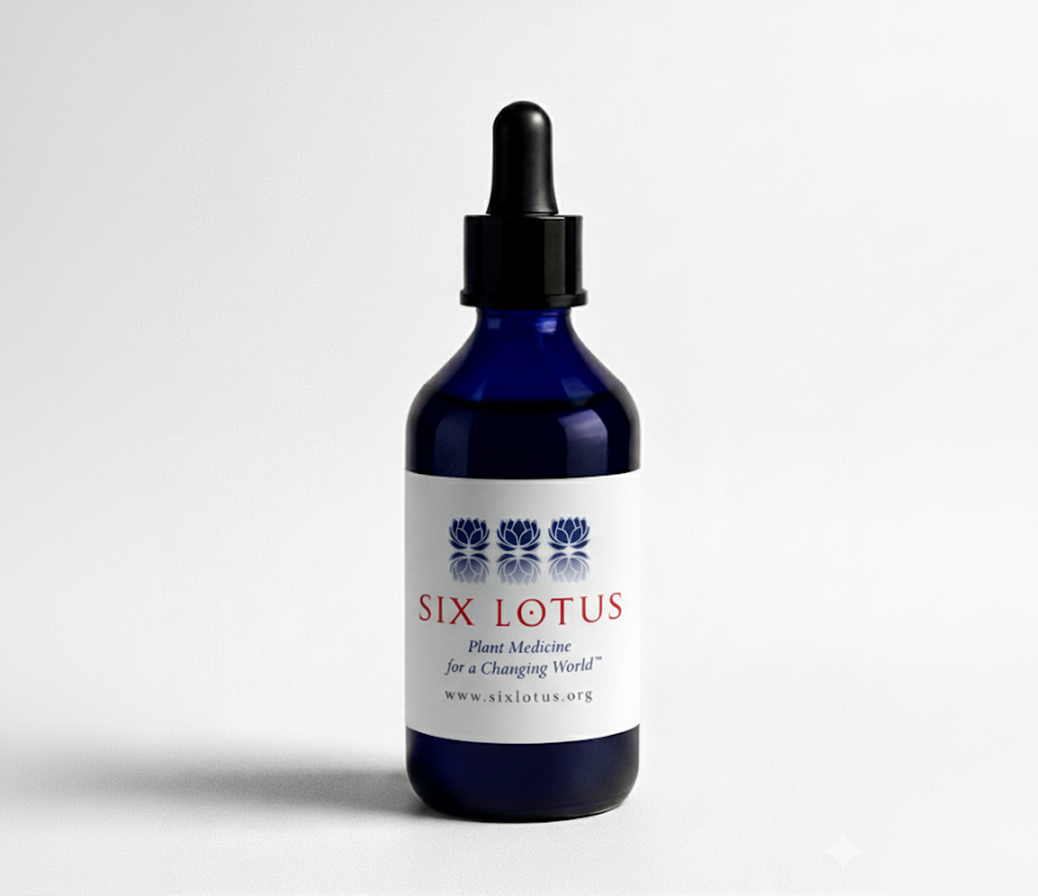Cancer Prevention
Provides daily antioxidant support for cellular health.
A 60mL bottle lasts 2.2 months for an adult. $48 USD.
The Cancer Prevention Tincture is a botanical formulation designed to reduce chronic inflammation, modulate oxidative stress, enhance cellular detoxification, and promote healthy immune surveillance. The selected herbs and plant constituents provide synergistic antioxidant, anti-mutagenic, and cytoprotective actions, creating a supportive terrain for cancer prevention. The tincture is suspended in non-GMO French vodka to maximize the bioavailability of both lipophilic and hydrophilic phytochemicals.



Key Botanical Components and Mechanisms
Nymphaea caerulea (blue lotus)
Provides aporphine alkaloids that reduce oxidative stress and promote nervous system regulation. May play a supportive role in limiting carcinogenesis via stress-buffering effects.
Sesamum indicum (white sesame seeds)
Contains lignans such as sesamin and sesamol, which have demonstrated antioxidant, anti-inflammatory, and potential chemopreventive properties. Supports NRF2 activation and inhibits lipid peroxidation.
Vaccinium angustifolium (wild blueberry)
A potent source of anthocyanins and polyphenols, Vaccinium angustifolium exhibits strong free radical scavenging capacity and DNA protection. It supports mitochondrial function and has shown promise in anti-cancer research through epigenetic modulation.
Quercetin (powder)
A flavonoid with strong antioxidant and anti-proliferative effects. Quercetin modulates key pathways involved in cell cycle regulation, apoptosis, and inflammation relevant to cancer initiation and progression.
Mentha spicata (spearmint leaves)
Offers rosmarinic acid and flavonoids that protect against oxidative DNA damage, reduce inflammation, and support digestive and hepatic function.
Artemisia vulgaris (mugwort)
Traditionally used for immune stimulation and liver support. Contains sesquiterpene lactones that may exert anti-tumor and detoxifying actions.
Calendula officinalis (calendula flowers)
Known for its anti-inflammatory, immunomodulatory, and skin-regenerating properties. Calendula officinalis has demonstrated cytostatic activity against tumor cells in vitro.
Solvent System
Non-GMO French Vodka: A 40% ethanol base that stabilizes the formulation and extracts a broad spectrum of active compounds. Ensures long-term preservation and supports systemic delivery.
Summary
The Cancer Prevention Tincture is a phytochemical-rich formulation designed to address the multifactorial nature of cancer risk through antioxidant defense, inflammation modulation, cellular detoxification, and immune resilience. Its synergistic blend of botanicals and nutraceuticals supports the terrain-based model of health, aimed at preventing cellular dysregulation before it manifests.
What You Can Do To Support Your Body
Cellular Defense Daily
Goal: Support cellular health and natural detox processes.
Diet:
Fruits: Mixed berries, citrus, papaya, pomegranate
Vegetables: Kale, spinach, arugula, broccoli sprouts (sulforaphane)
Herbs/Spices: Garlic, turmeric, ginger
Fungi: Maitake, shiitake
Minerals: Selenium (Brazil nuts), zinc (seeds/legumes)
Beverages: Matcha, dandelion root tea, lemon water
Lifestyle: Emphasize whole foods, limit charred/processed meats, regular physical activity, and hydration.
Why diet matters: Cruciferous vegetables, alliums, and antioxidant-rich foods help maintain normal detox pathways, aligning with the tincture’s daily wellness focus.
These statements have not been evaluated by the Food and Drug Administration. This product is not intended to diagnose, treat, cure, or prevent any disease.
References
Bone, K. and Mills, S., 2013. Principles and Practice of Phytotherapy: Modern Herbal Medicine. 2nd ed. Churchill Livingstone.
Chevallier, A., 2016. Encyclopedia of Herbal Medicine. DK Publishing.
Ding, Y. et al., 2019. Quercetin as a potential anti-cancer agent: Mechanisms of action and clinical applications. Oncotarget, 10(45), pp.5035–5045.
Kim, H. et al., 2014. Sesamin attenuates oxidative stress by activating NRF2 signaling in human hepatic cells. Nutrition Research and Practice, 8(5), pp.478–484.
Kumar, S. and Pandey, A.K., 2013. Chemistry and biological activities of flavonoids: an overview. Scientific World Journal, 2013, p.162750.
Li, Y. et al., 2016. Anthocyanins and human health: An in-depth review. Nutrients, 8(11), p.555.
Preethi, K.C. et al., 2006. Protective effects of Calendula officinalis extract against hydroperoxide-induced oxidative stress in rats. Phytomedicine, 13(9–10), pp.591–595.


